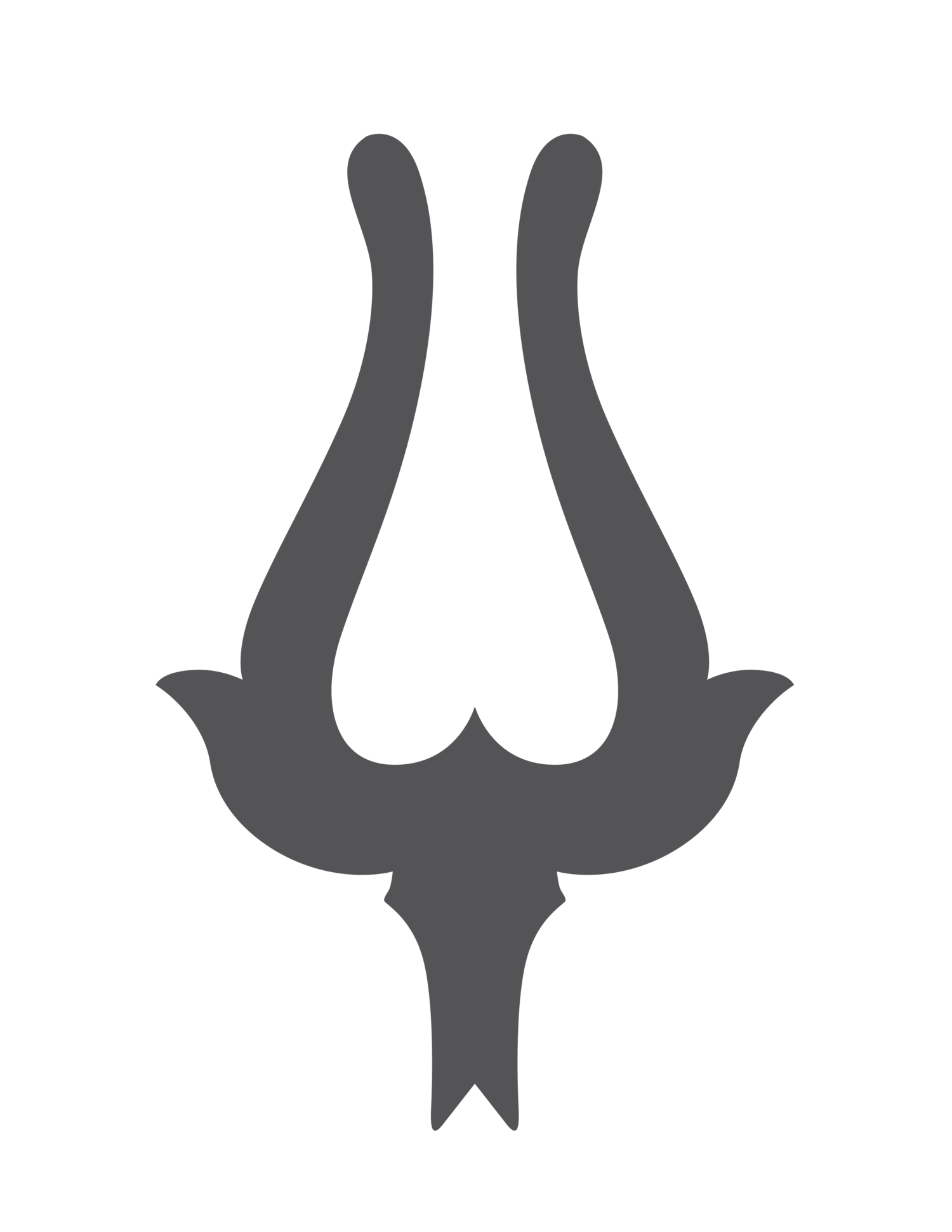
PERFORMER SERIES - YST Stratocaster

Top Row: Daion 500YS, Yamaki 500I /RN, Daion 600TS; Bottom Row: Yamaki 800N, Yamaki 500N (M)

Top Row: Daion 500YS, Yamaki 500I /RN, Daion 600TS; Bottom Row: Yamaki 800N, Yamaki 500N (M)
Performer Series - YST Stratocaster
After reviewing a double digit sampling of JooDee, Yamaki, and Daion Performer Stratocaster bodies guitars, and all with the ERS (Epochal Rod System) truss rod adjustment, the only difference is the logo on the headstock. They all seem to be using the same model designations, construction, hardware, and electronics. That being said, JooDee also made strats without ERS (for example the Artist Series / Artist Custom and Electric Custom), which are not included here.
The model & options
For purposes of brevity, I’ll be using the Yamaki model designations since we have the most detail documentation on this brand. In the period literature the 600 is listed as the “old type” (a ‘54 Stratocater copy) and the 800 as the “pro model,” perhaps due to the Mighty Mite Pickups. We do have one JooDee Performer sales slick, and they used “JST” in the model rather than Yamaki’s “YST”
Period pricing as of June 1, 1978 was as follows:
YST-450 ¥24,000 (Maple cap fingerboard and maple neck, less expensive Japanese tuners)
YST-500 ¥26,500 (Solid maple neck, best quality sealed Japanese / Yamaki branded tuners)
YST-600 ¥32,000 (‘54 Stratocaster copy with single old type string tree and solid white pickguard)
YST-800 ¥42,500 (Might Mite 1100 pickups, foreign-made tuners)
YST-801 ¥40,500 (Same as YST-800 except Japanese-made tuners)
How to find the model number
In our sampling, in all cases there is a model number stamped at the bottom heel of the neck. In most cases there is a model number and finish code stamped in the neck pickup cavity. We have seen hand written designation on bodies as well. There does seem to be some mixing and matching. For example in the the photo below, you have a body marked 450 I (Ivory) with a 500 neck. The Ivory finish was only available on 500 and 450 models. The neck construction and tuners are completely different between a 500 and 450 (more on that later). So what is it? Based on the neck, I’d say it’s a 500 I (Ivory). This mix and match is probably driven by what they had on hand and what order they needed to fulfill. Another example, we have an 800 neck (based on the non-Yamaki branded “best quality foreign-made machine heads and neck stamp), and electronics, but the model number in the pickup cavity has been scraped off and “800N” hand written on the body (see photo below).
Electronics
We have seen three electronics configurations. The vast majority being a half-shielded pickgaurd, with a green 0.022U capacitor. Two Daion Performers had full shielding with the green capacitor (600 and 500), and lastly the Yamaki YST-800 had a silver barrel capacitor that matches the photo in the Yamaki catalog. That capacitor may be specific to the YST-800 due to the Mighty Mite pickups, but that is conjecture as we only have one 800 model in our collection. The factory method to ground the guitar was a bare wire run into the tremolo cavity with the wire inserted into one of the two holes used to anchor the tremolo claw.
Serial Numbers
In models that have half-shielding, there is almost always a serial number stamped on the back of pickgaurd, either on the plastic itself or on the silver shielding paper. On models that have the full shielding, we have not seen a serial number on the back of the pickguard. In the case of the Daion 600 TB (which had full shielding under the pickguard), there was a serial number sticker on the body heel behind the neck (see picture below).
Tremolo
The Yamaki catalog talks about a 12* angled tremolo block that allows for “octave-down” playing. I could not tell any difference in the hardware across the model range. We found no marks or stampings on the tremolo hardware. The tremolo arm is a M6 thread.
Tuners
The 450 had “quality machine heads,” the 500 and 600 “best quality machine heads” (which are sealed tuners of various styles and will have the Yamaki logo), and the 800 “best quality foreign-made machine heads,” and the 801 “best quality Japanese-made machine heads.” On our 800 example, the tuners look to be Schaller and stamped on the inside, made in W. Germany.
Necks
All have the ERS (Epochal Rod System) truss rod adjustment. The 450 has a maple neck with a maple cap to hide the truss rod routing (thus no “skunk" stripe” on the back). All other models have a solid maple neck with the “skunk stripe” on the back (the skunk stripe being the contrasting piece of wood used to fill the channel routed for the truss rod). A rosewood fingerboard was available across the line, and was denoted with a /RN.
Finishes
White (W) was only available on the 450 only.
Black (B) was available on both the 450 and 500.
Ivory (I) was available on the 450, 500, and 600.
Yellow Sunburst (YS) was available on the 450, 500, and 800.
Tobacco Brown Sunburst (TS) was only available on the 600.
Natural (N) was available on the 500, 600, and 800.
Matte finish (M) was available across the line. On the body you might see a circle (M) stamped to denote a matte finish. Guitars that are Natural in matte are easy to spot as it has has much more pronounced open graining and no gloss. On others colors, a matte finish is much harder to discern.
ERS (Epochal Rod System)
The ERS takes a 4mm Allen wrench and uses a worm drive to tighten or loosen the truss rod. With the neck off you can easily place a drop of machine oil on the threads to lubricate the gear. Remember that the gear ratio is 17:1, meaning one 360* rotation of the Allen wrench is only going to rotate the truss rod nut ~21*.
Miscellaneous visual identification tips
The 600 is easy to spot as it is a ‘54 Stratocaster copy model and has a single “old type” disc string tree and the pickgaurd is solid white (i.e. not White-Black-White layered). Also, if it has a Tobacco Sunburst (TS) finish, it should be a 600.
The 800 should have the Mighty Mite 1100 pickups and no plastic pickup covers (so they look exposed and black). Unfortunately I could not find any unusual markings on the pickup to confirm they are made by Mighty Mite. A “turtle shell pattern” pickgaurd was only available on an 800, though the literature also states the 800 was also available with a white-black-white pickgoard. There is another 800 out on Reverb with the same Natural finish and white pickgaurd as ours, confirming our example was not a fluke.
The lower end tuners and the non-skunk stripe neck are the quick identifier for a 450 series. White (W) is also a 450 only color. If you are struggling to know if the color is Ivory (I) or White (W), look at the color catalog (specifically the picture of the YPB-450I versus the YST-450W). You’ll see the Ivory has a lot more pale yellow in the finish.
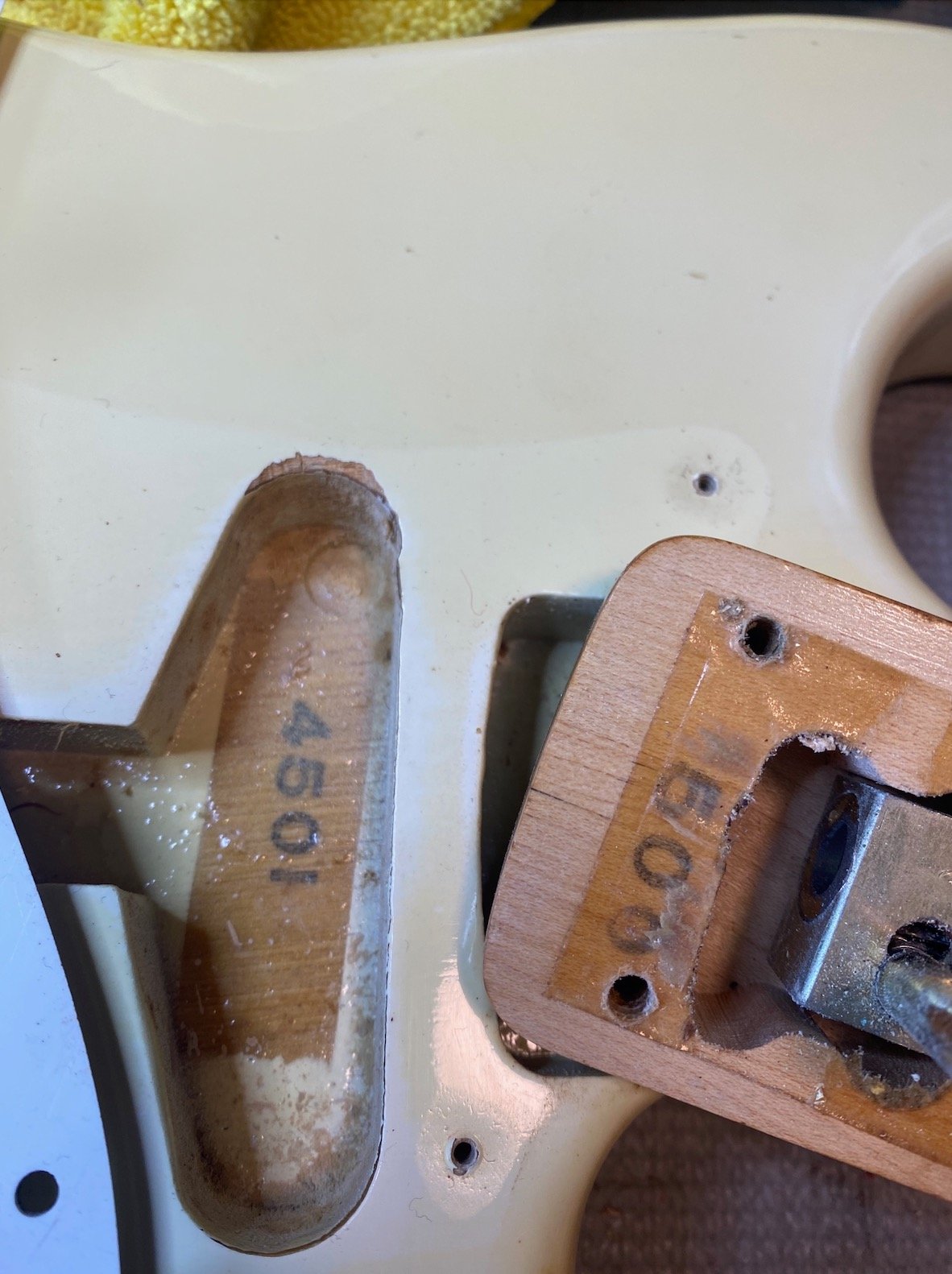
Mix and Match Neck and Body
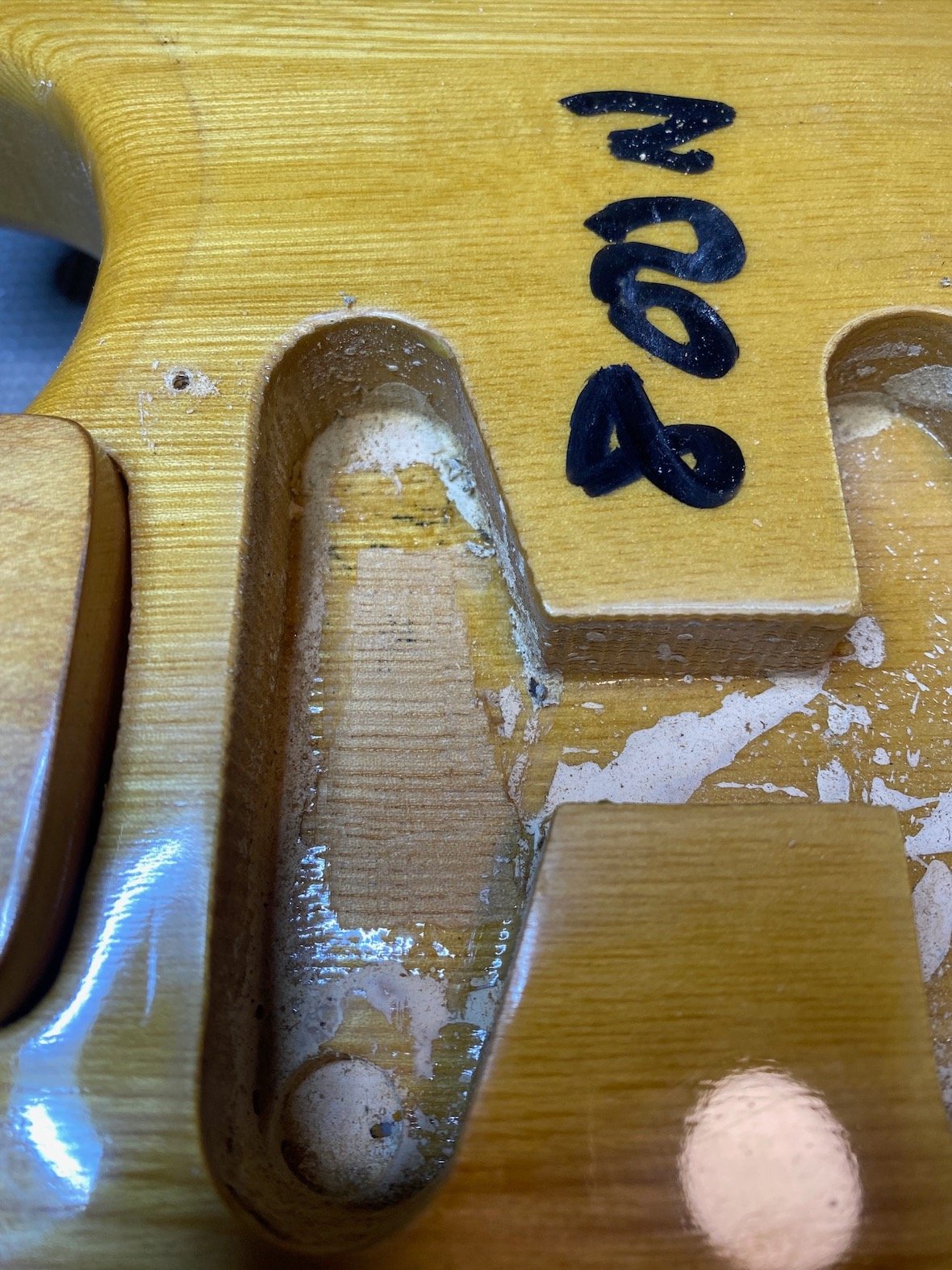
Change in manufacturing? Stamp in pickup cavity scraped off and hand written 800N

Example of full shielding in a Daion 600, green capacitor, no serial number
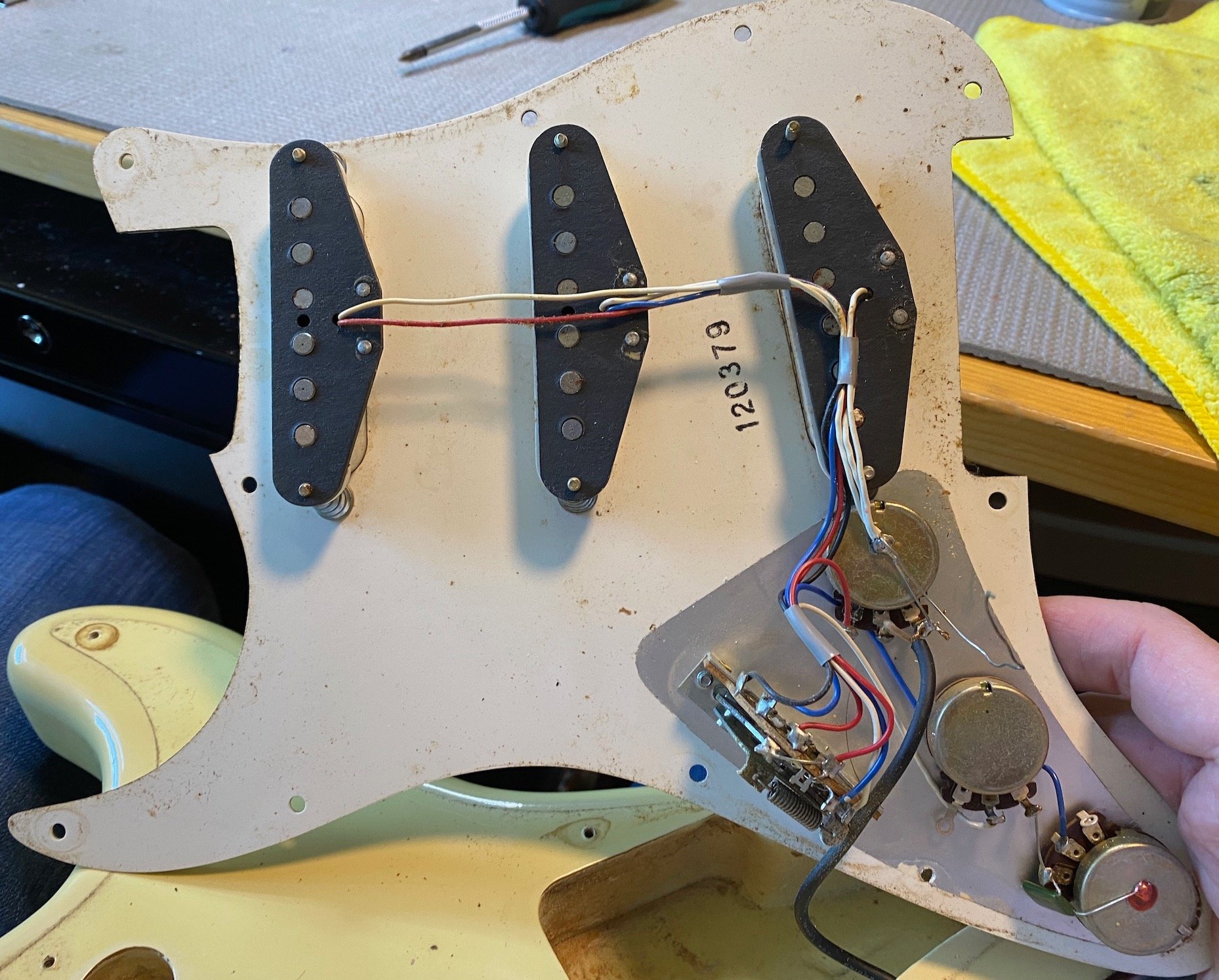
Typical half shield wiring and serial number stamp and green capacitor
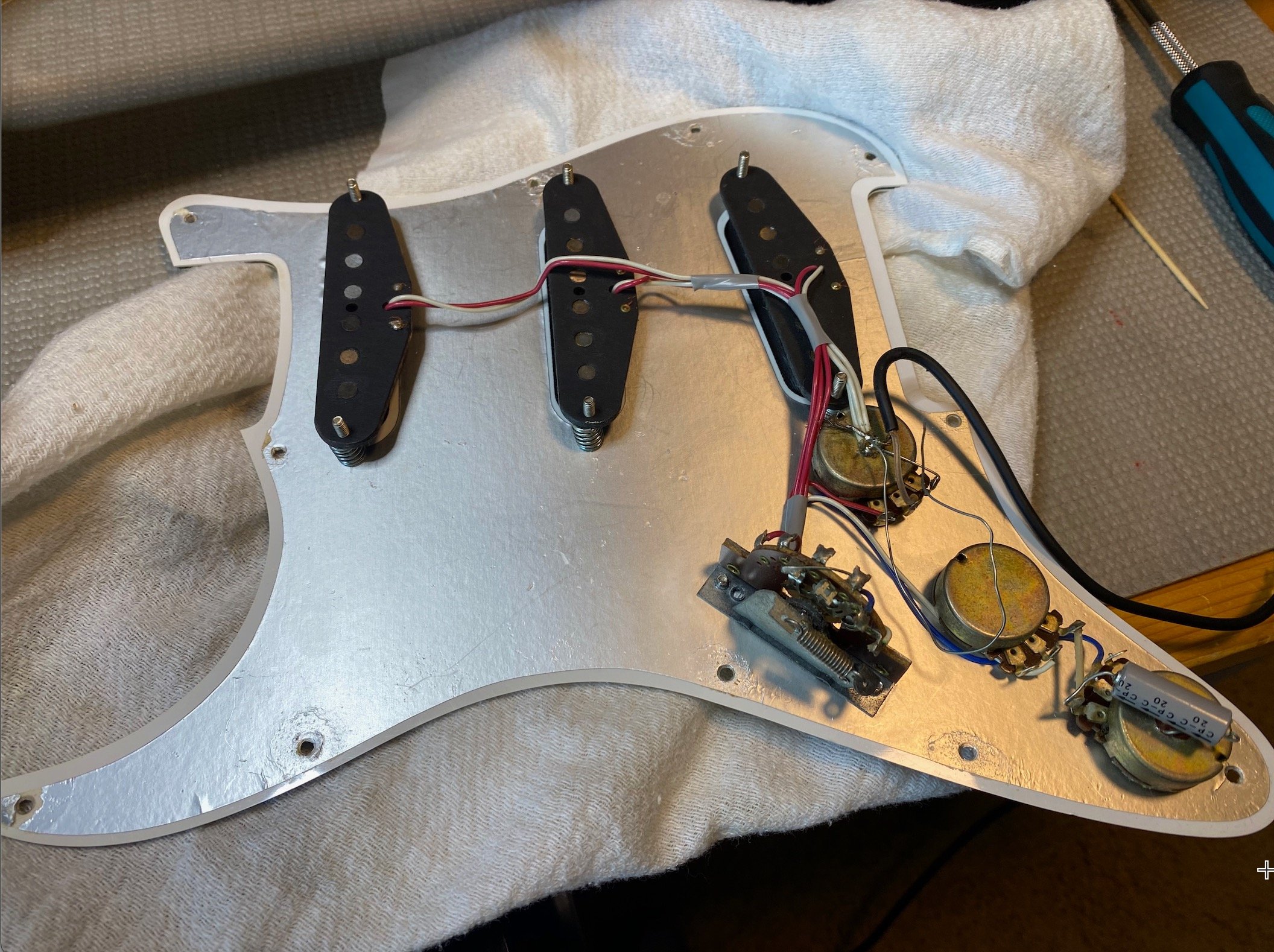
Full Shield 800 Wiring and silver capacitor

Yamaki catalog showing full shielding and silver capacitor

ERS worm gear detail
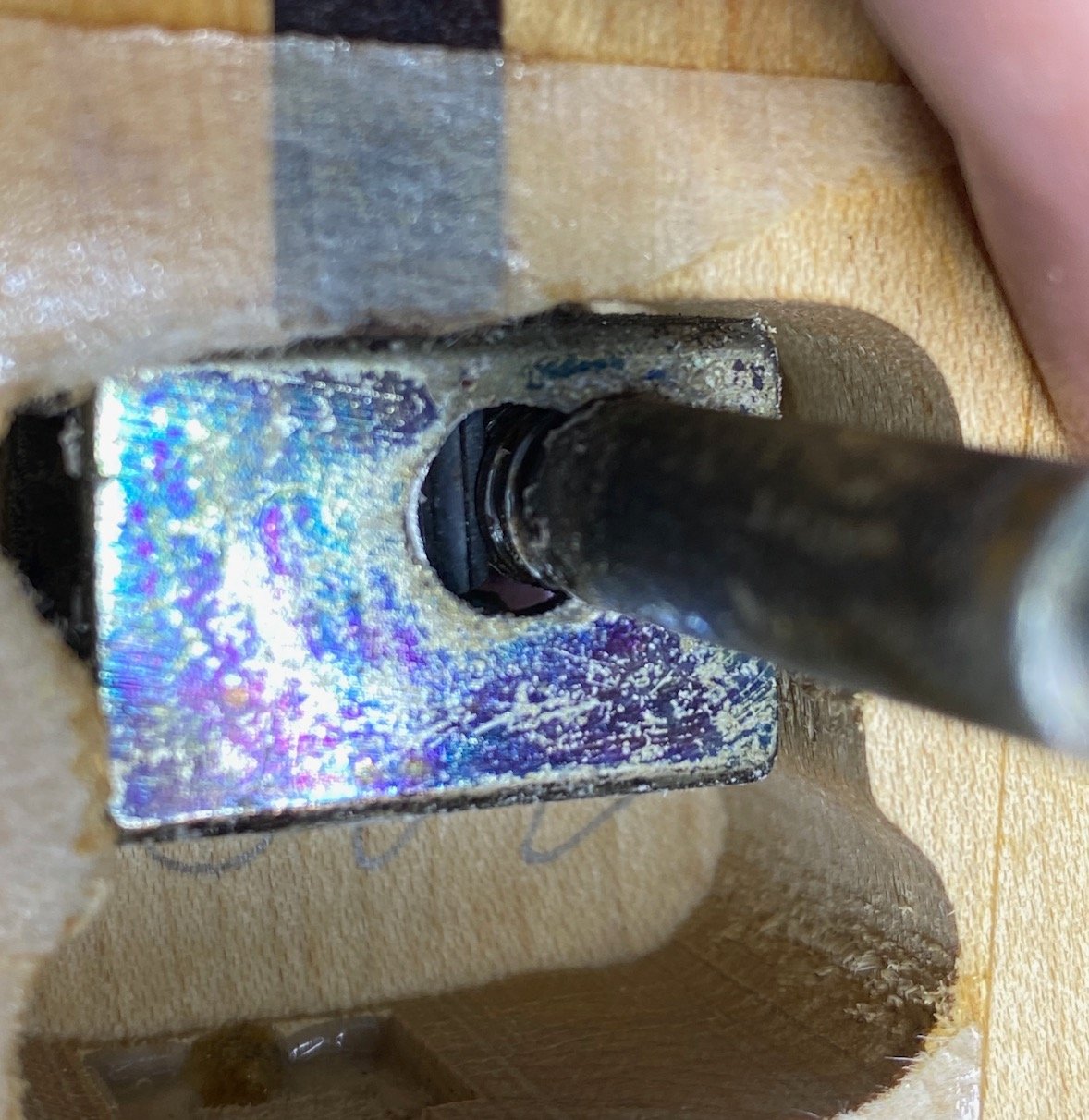
ERS worm gear detail

ERS detail of end of neck

450 neck showing maple cap / fretboard on top of maple nec

1978 YST Lineup

1979 YST-500 YST-550

1979 YST-600 YST-800

1979 YST-800

1981 YST Lineup

1988 Book "History of Electric Guitars"







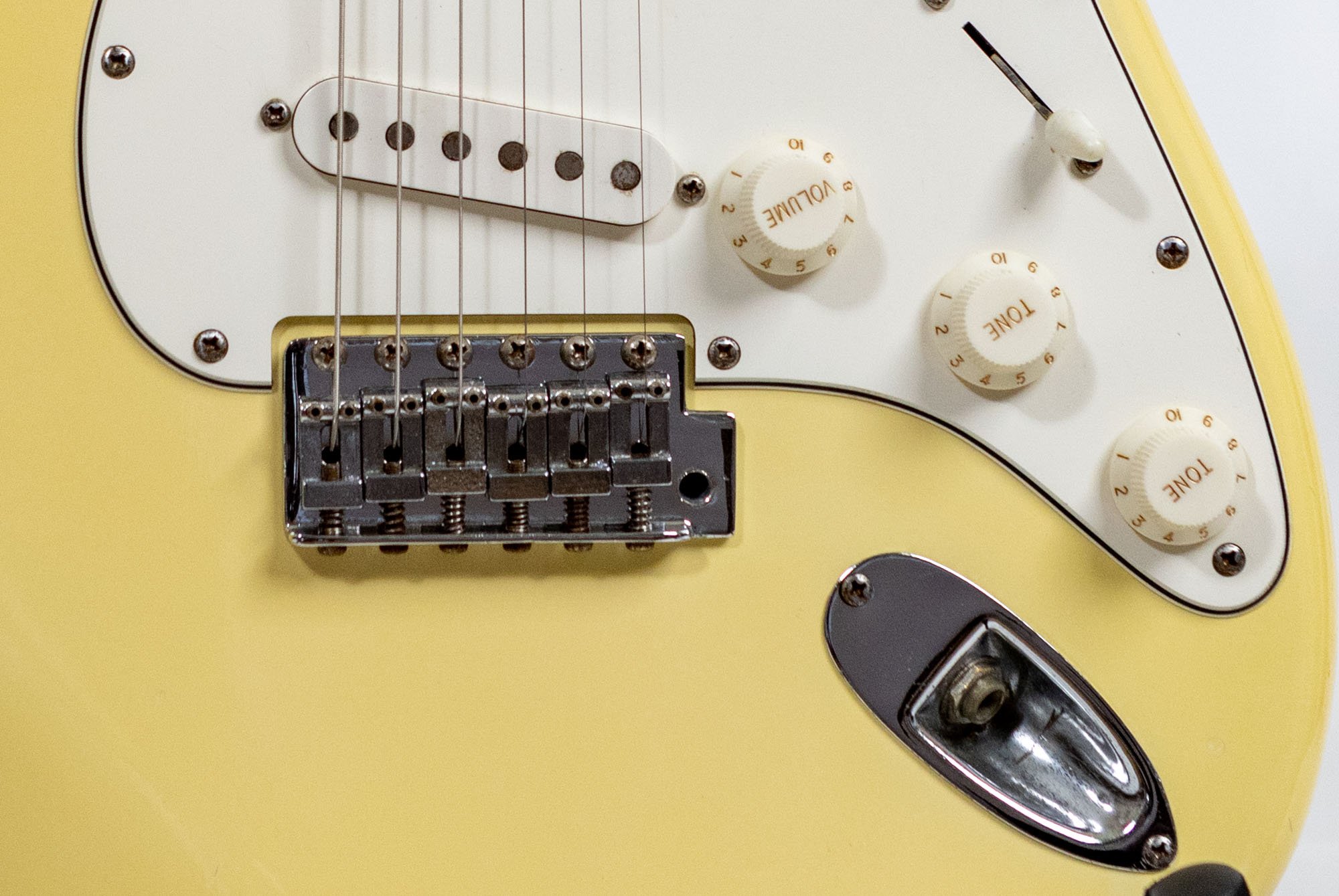
















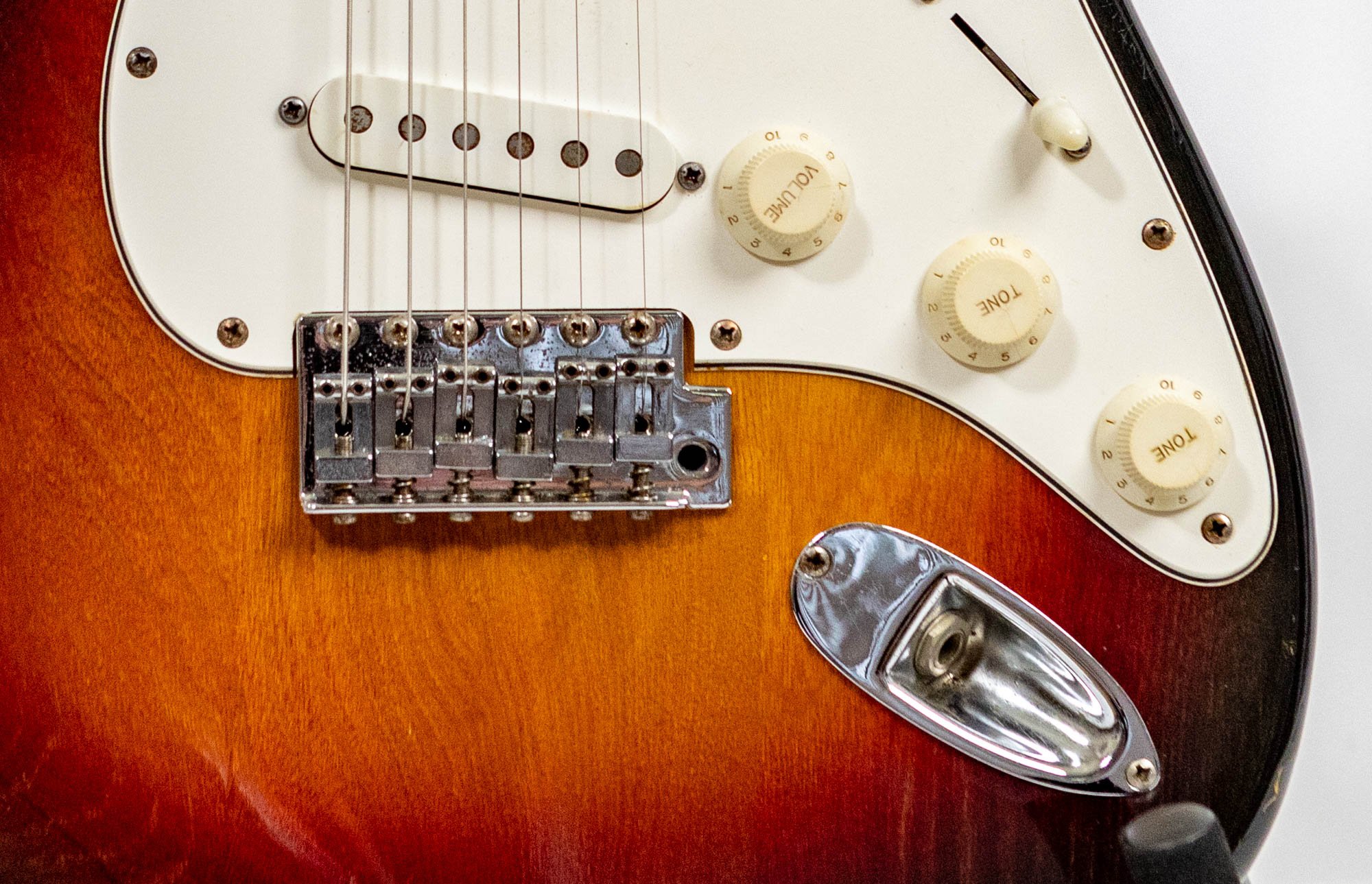

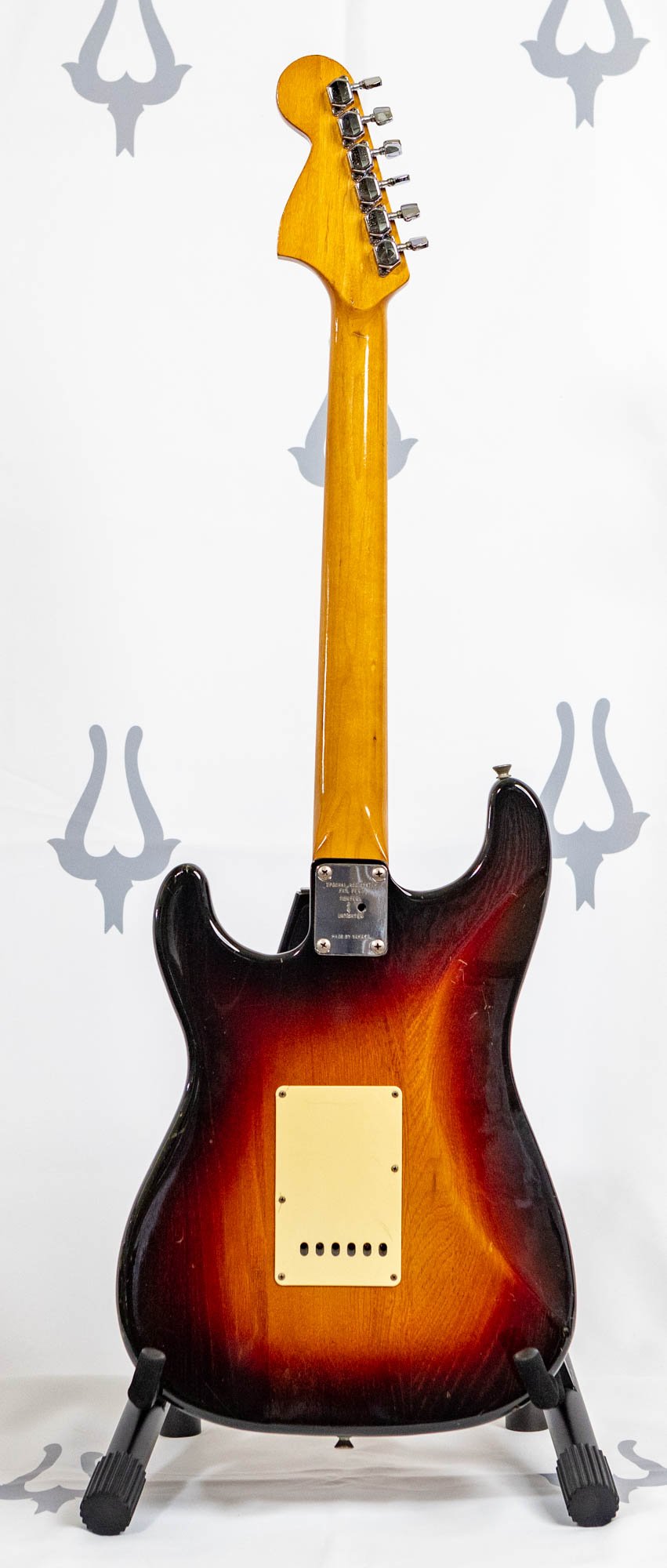





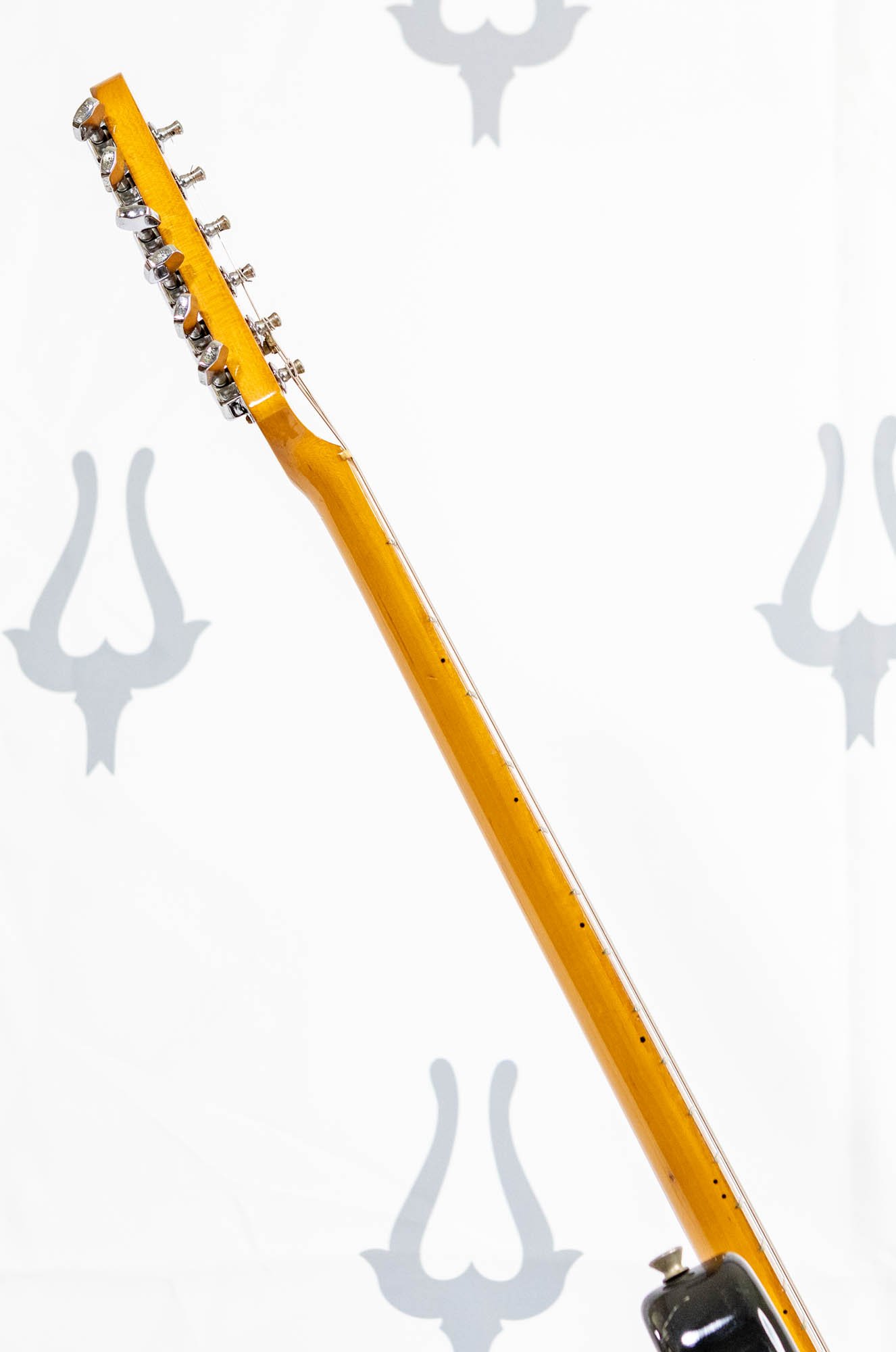
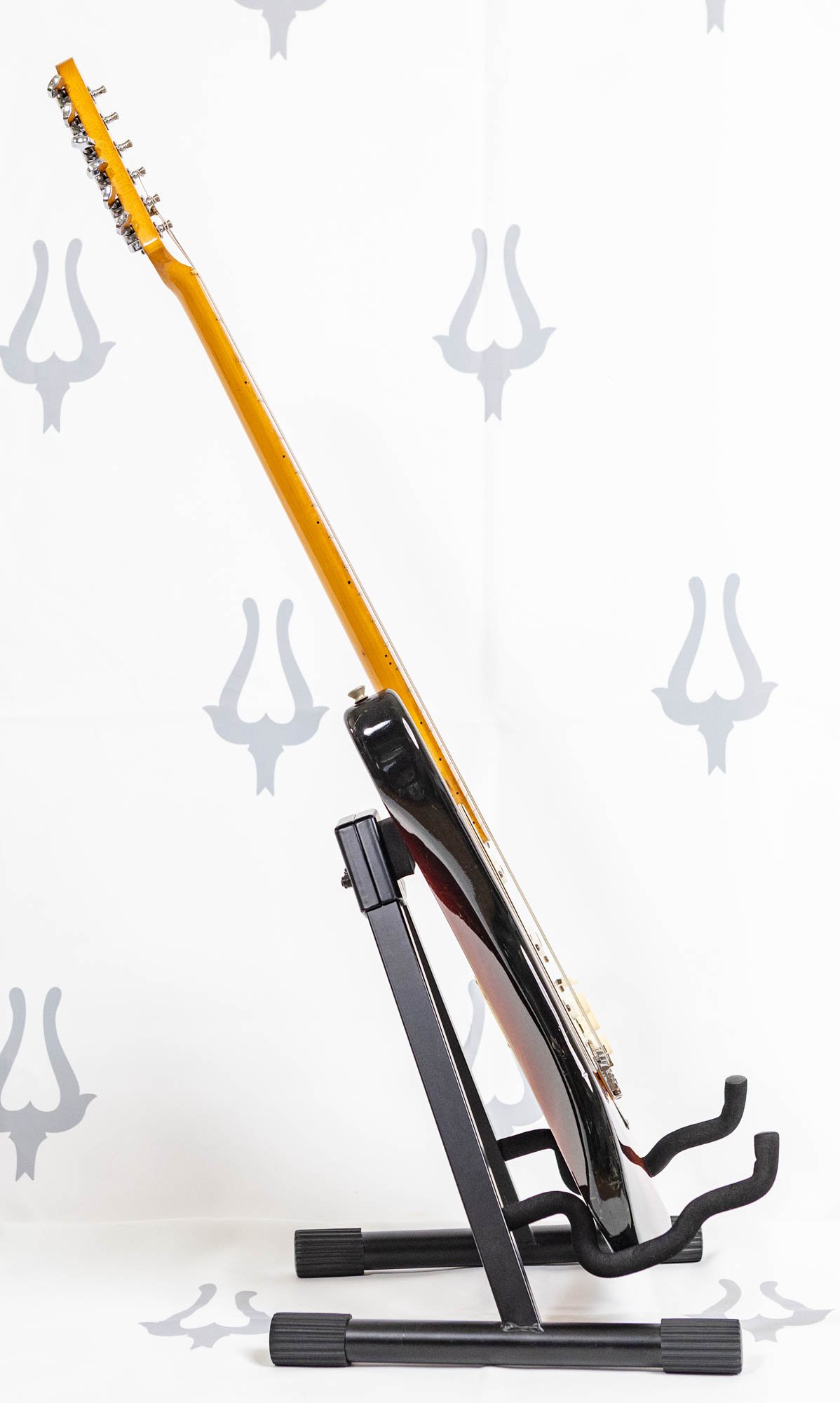


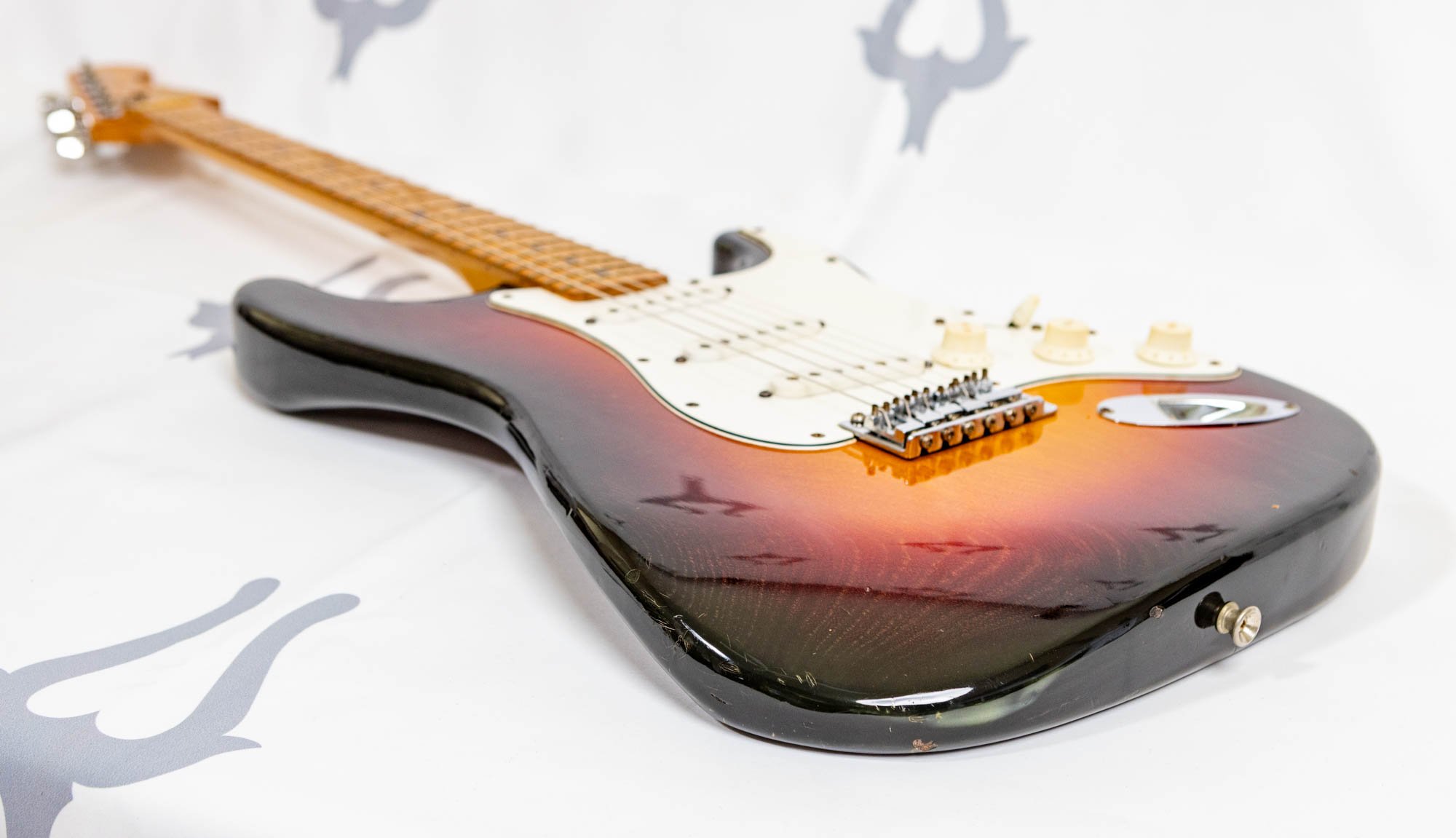
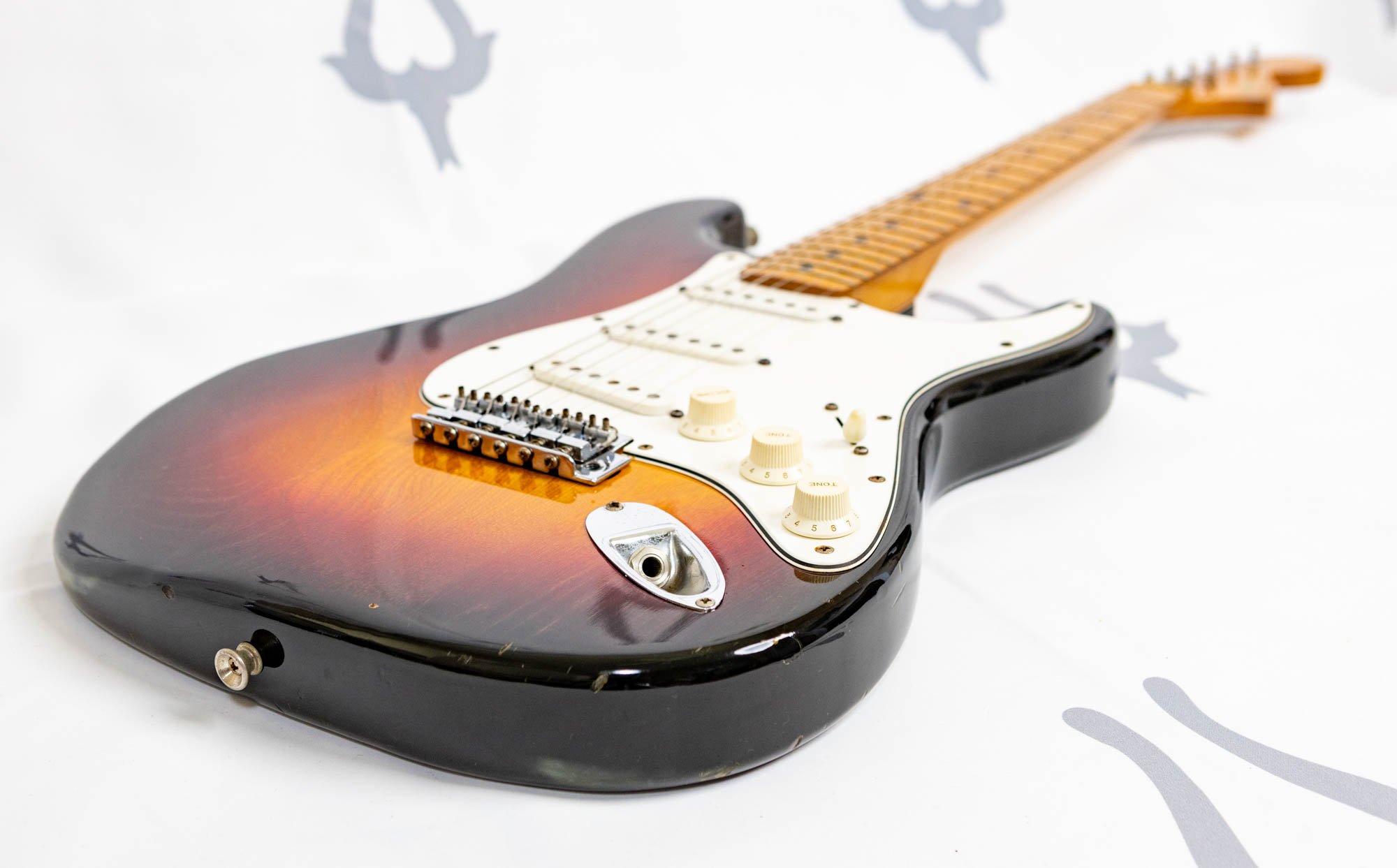
Yamaki 500N (Natural - Matte Finish)
Serial #120103


















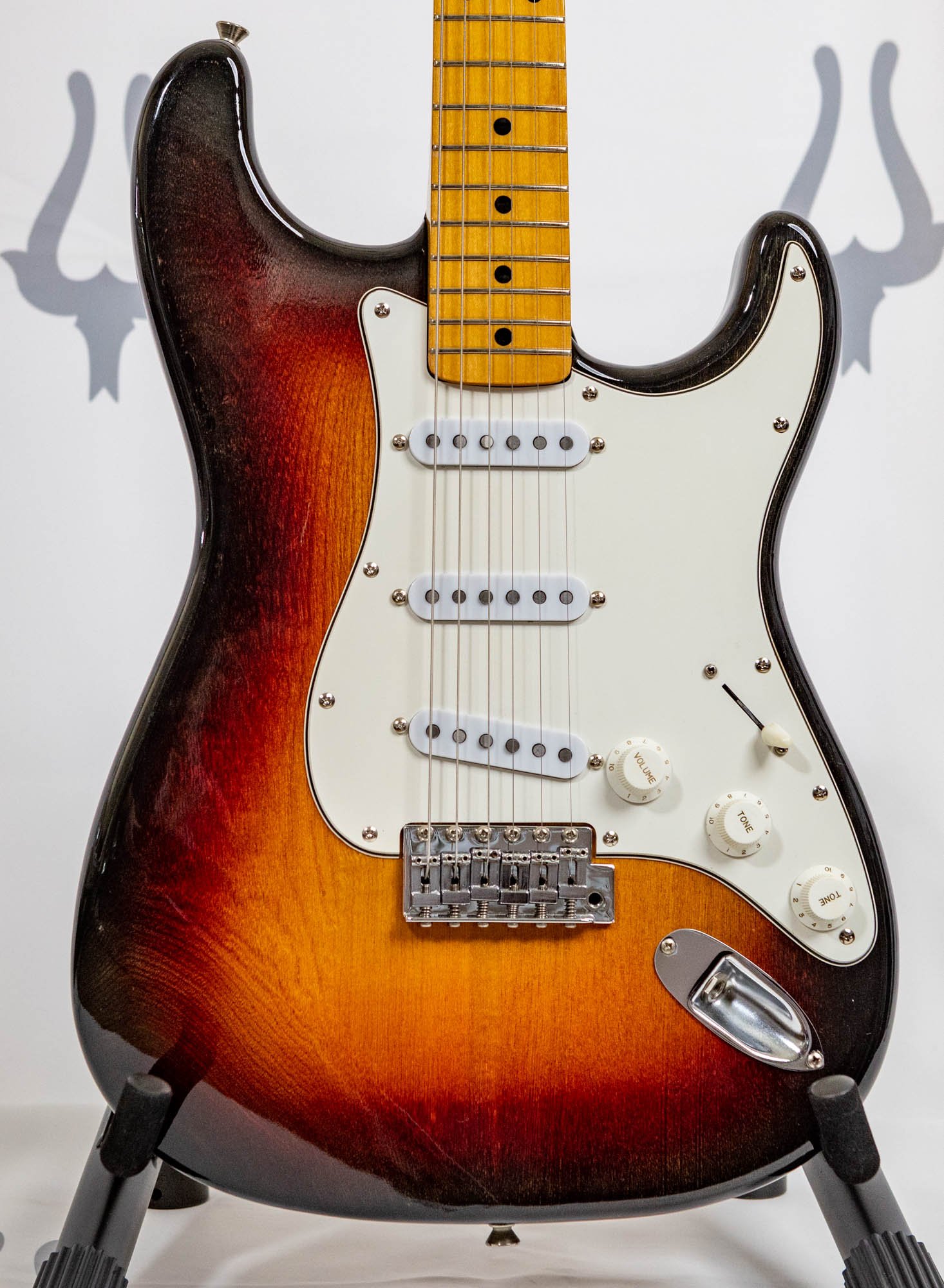











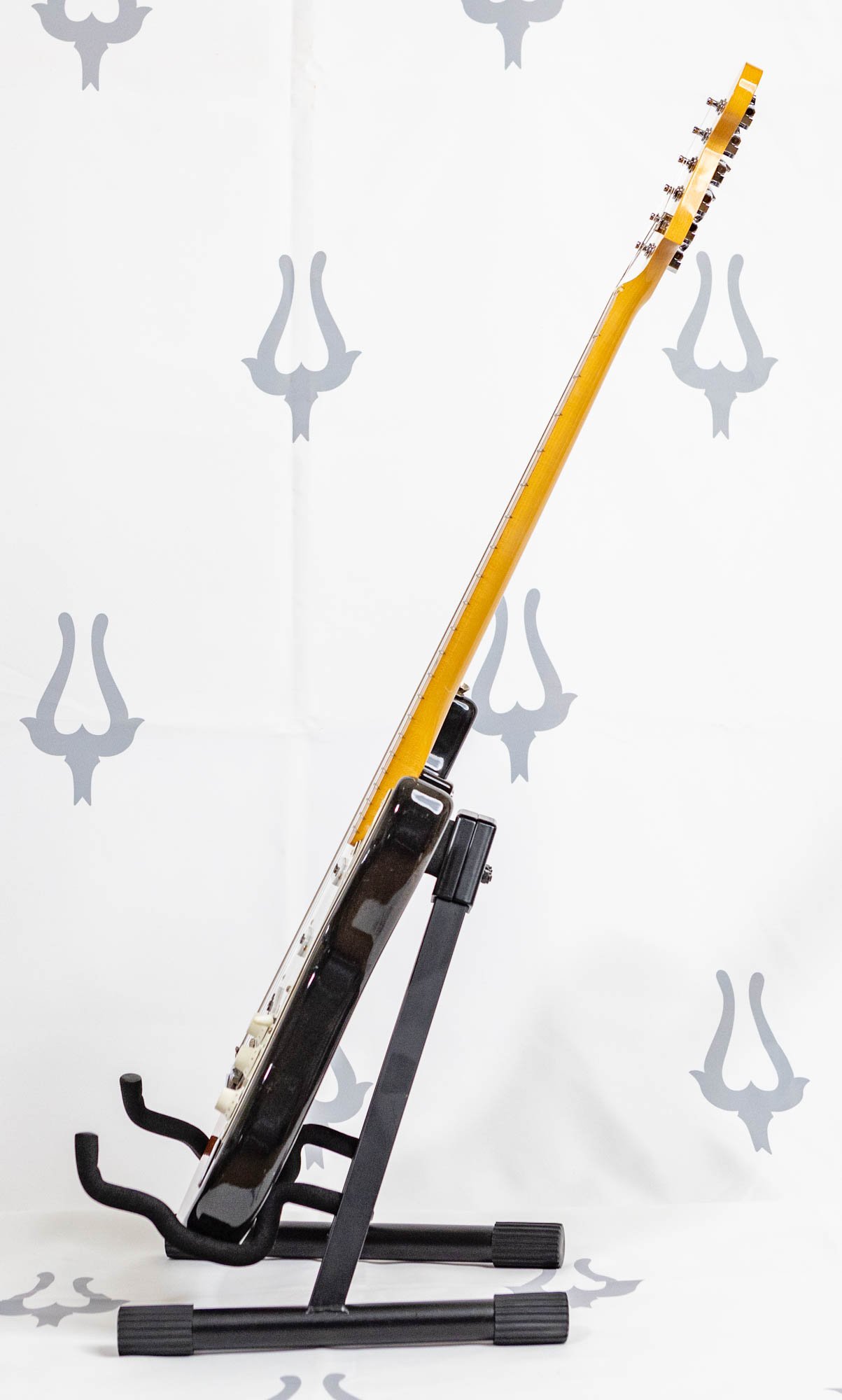


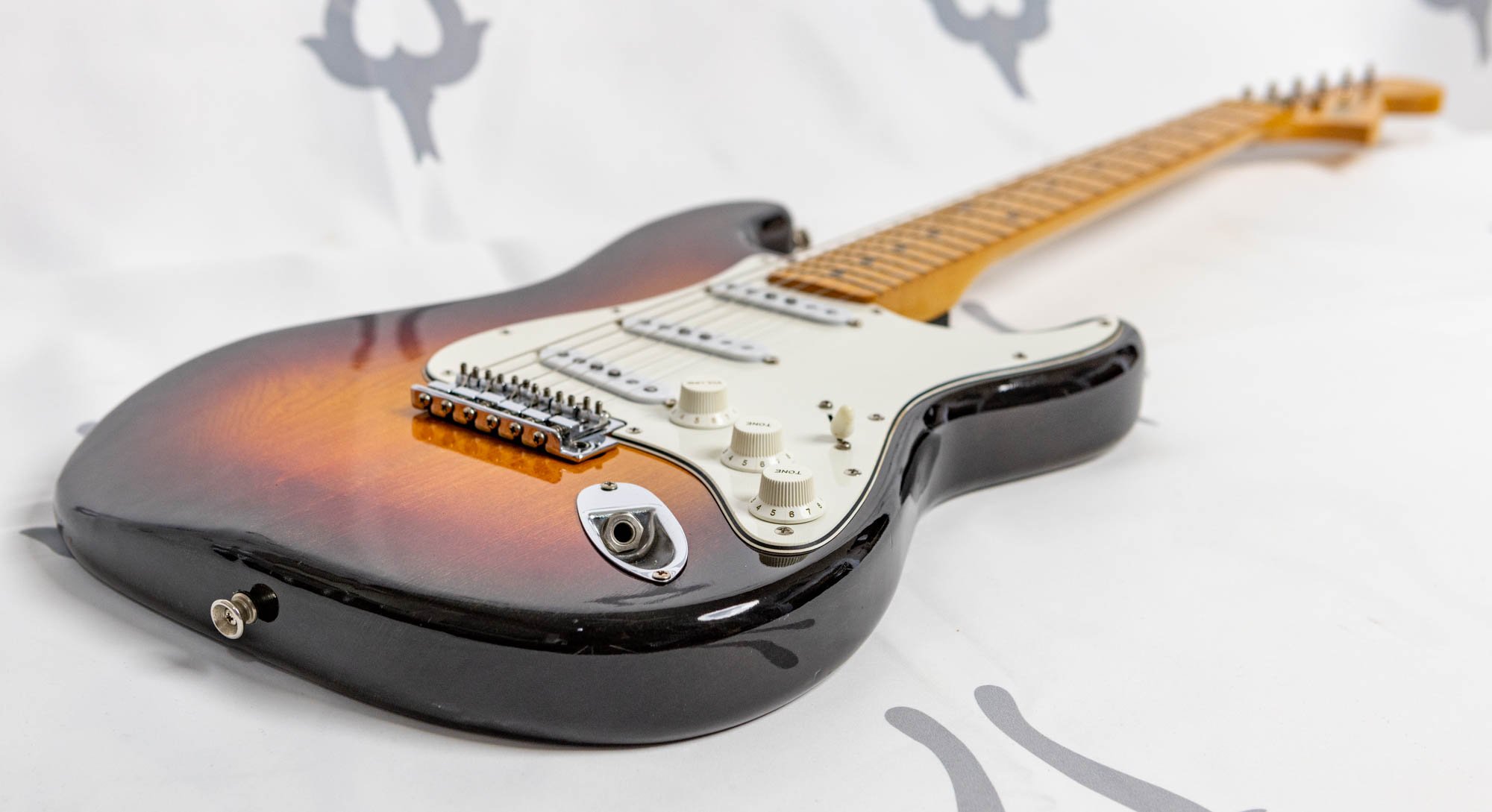
Daion 500YB (Yellow Sunburst)
This item is available for purchase on Reverb




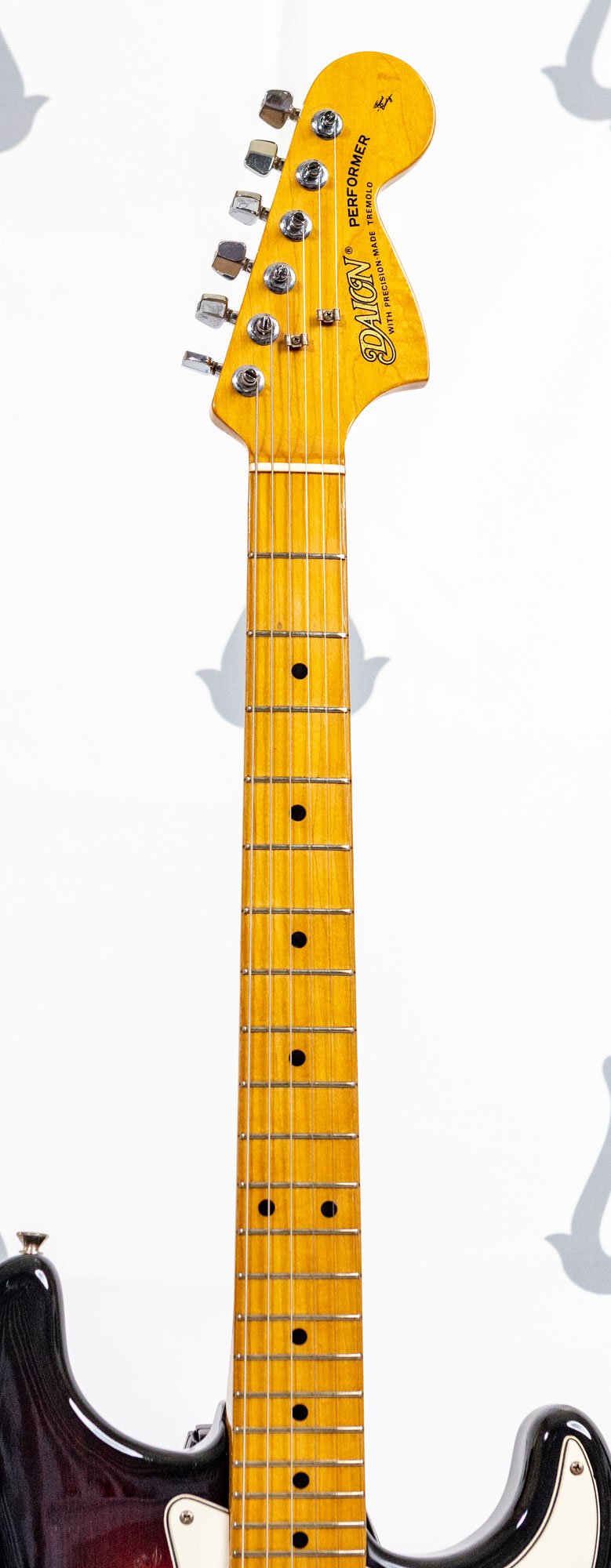









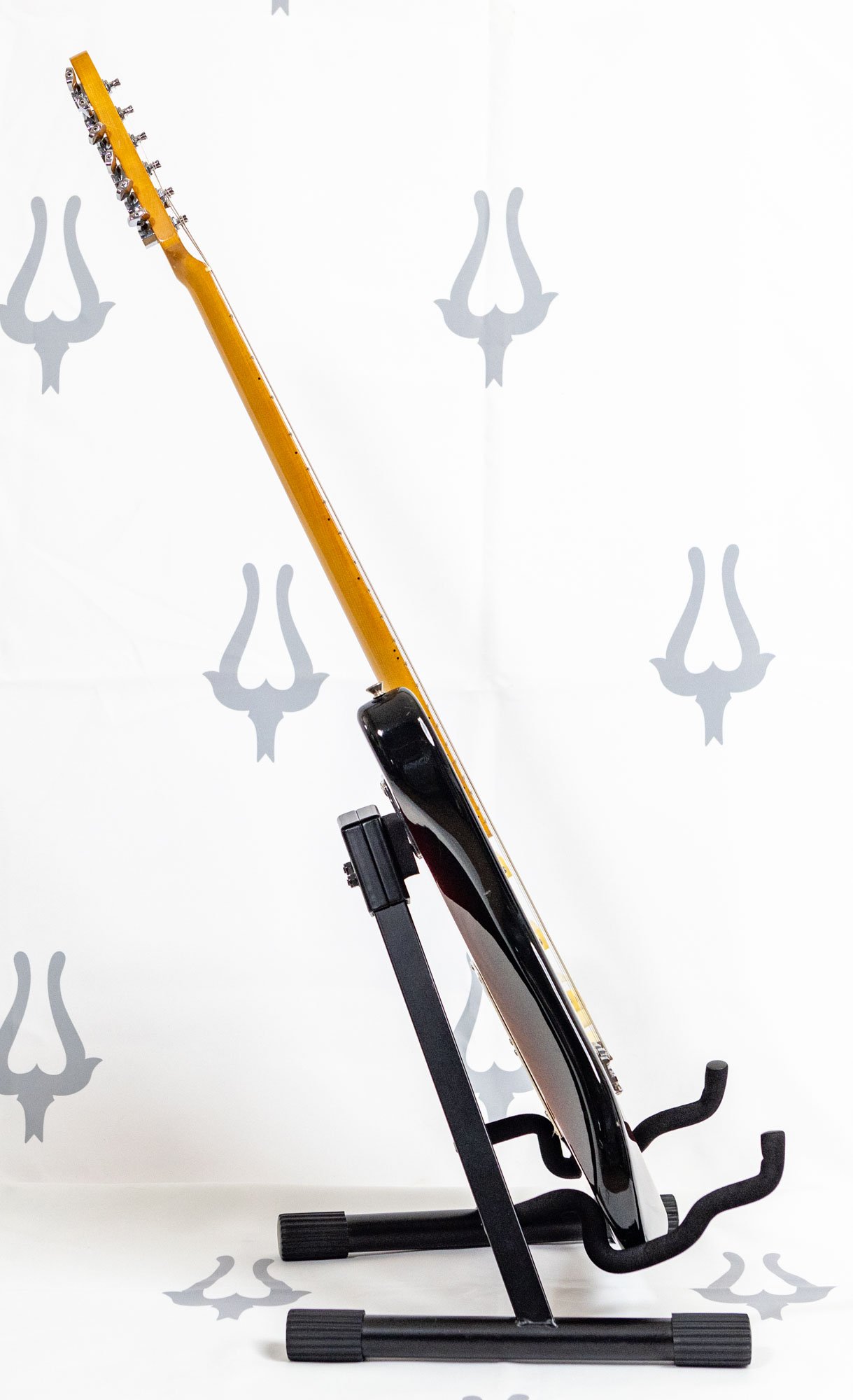
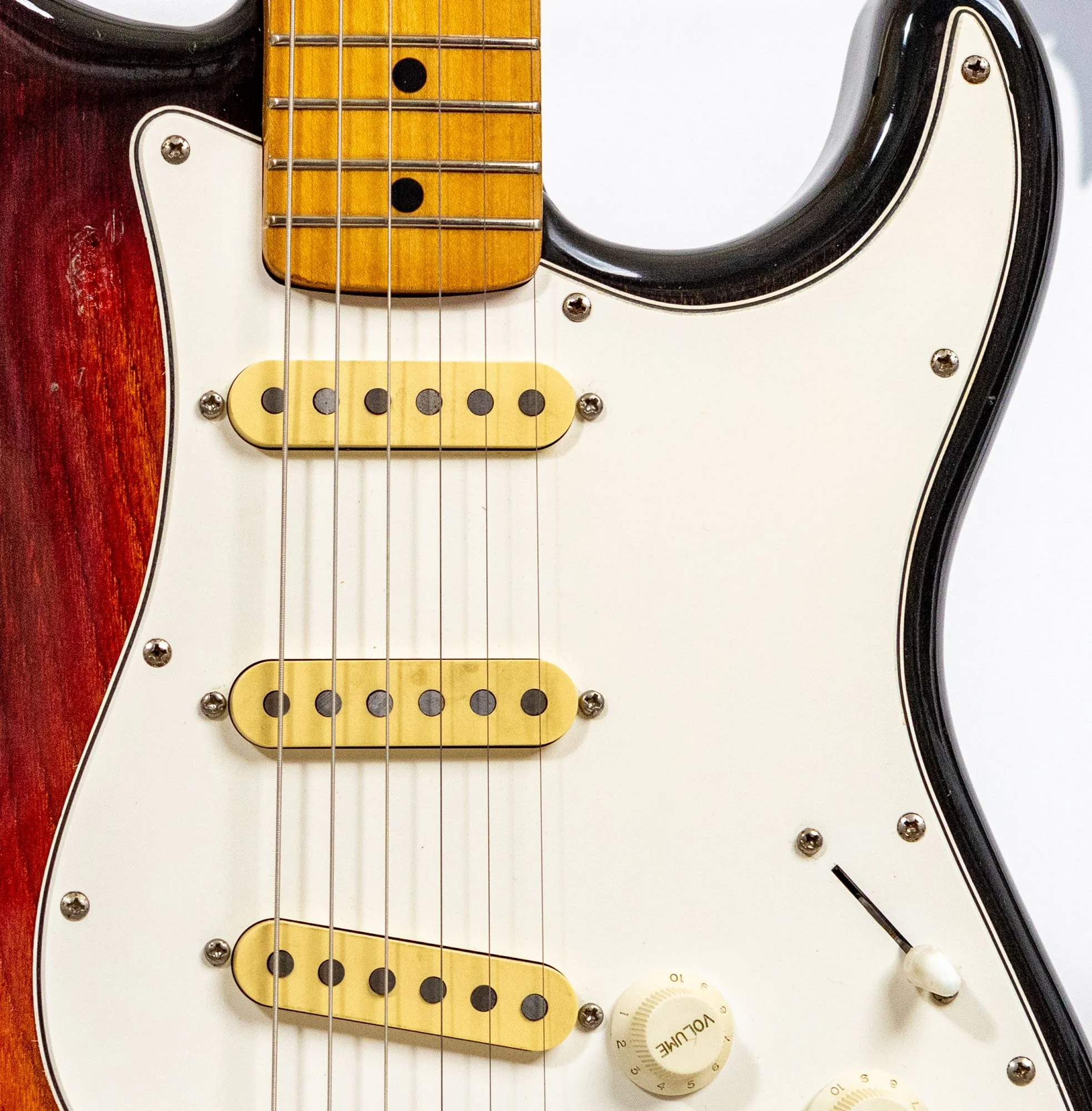

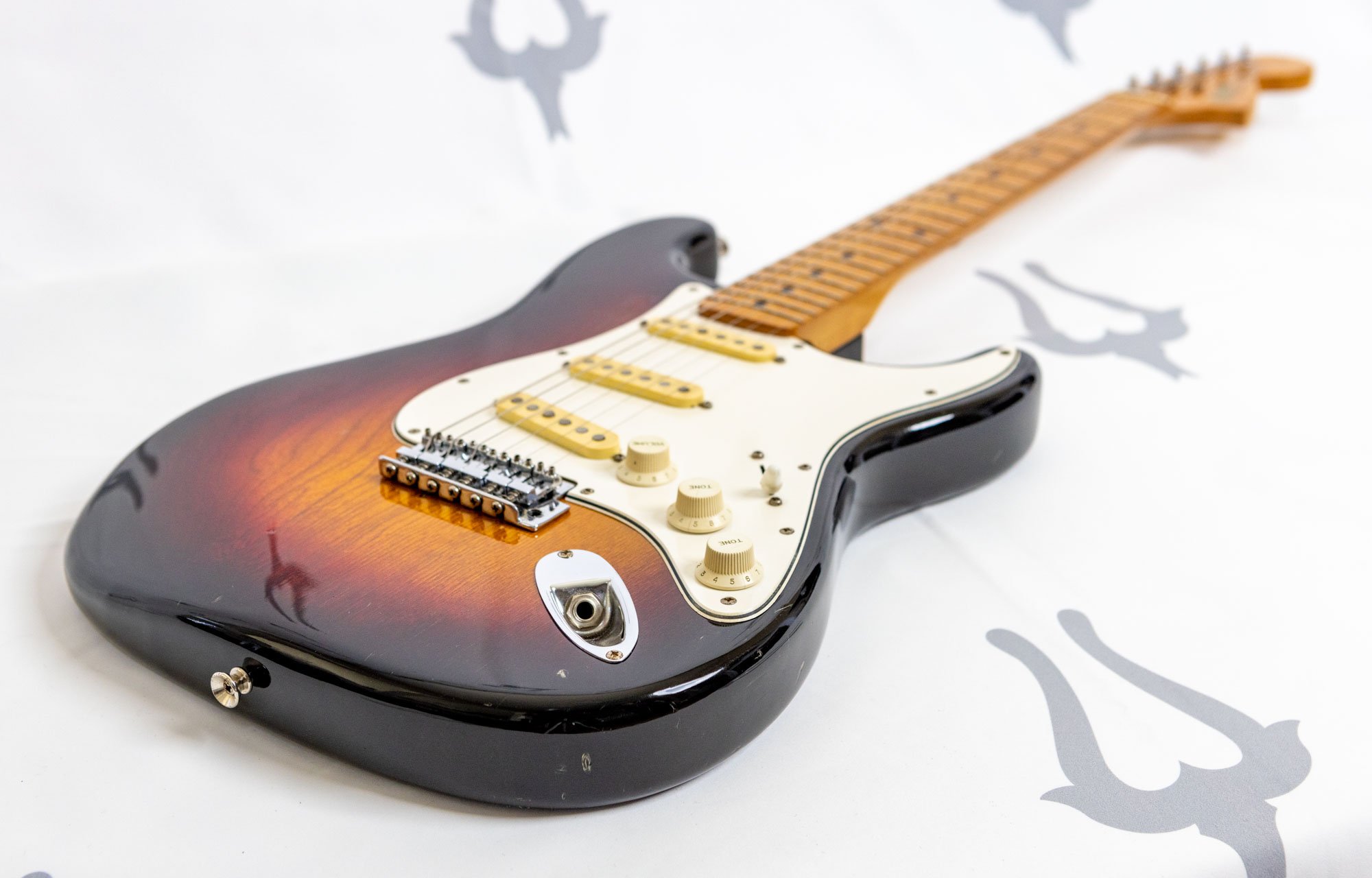
Yamaki 500I /RN (Ivory Rosewood Neck)
Serial #120376






















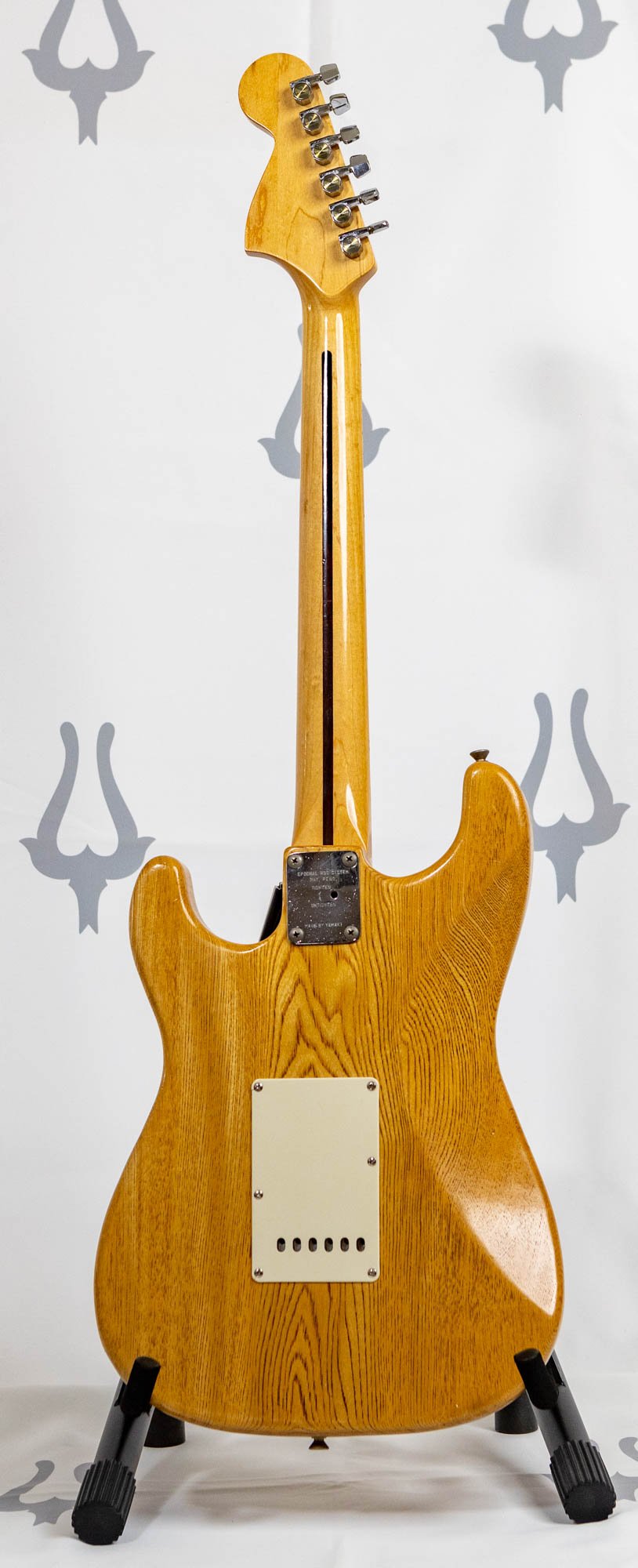








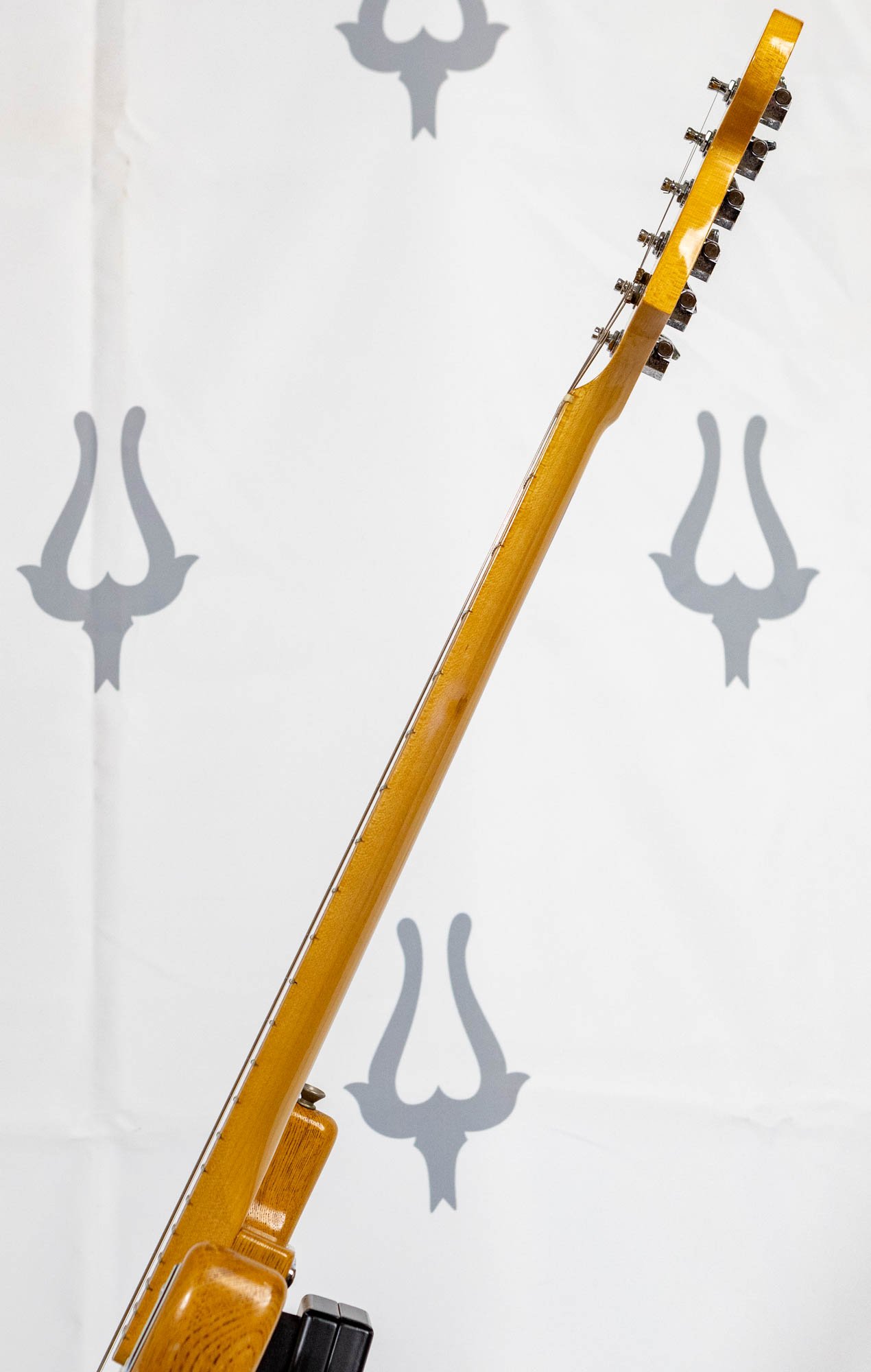


Daion 600TB (Tobacco Brown Sunburst)
This item is available for purchase on Reverb


















JooDee 600N (Natural - Matte Finish)
This item is available for purchase on Reverb












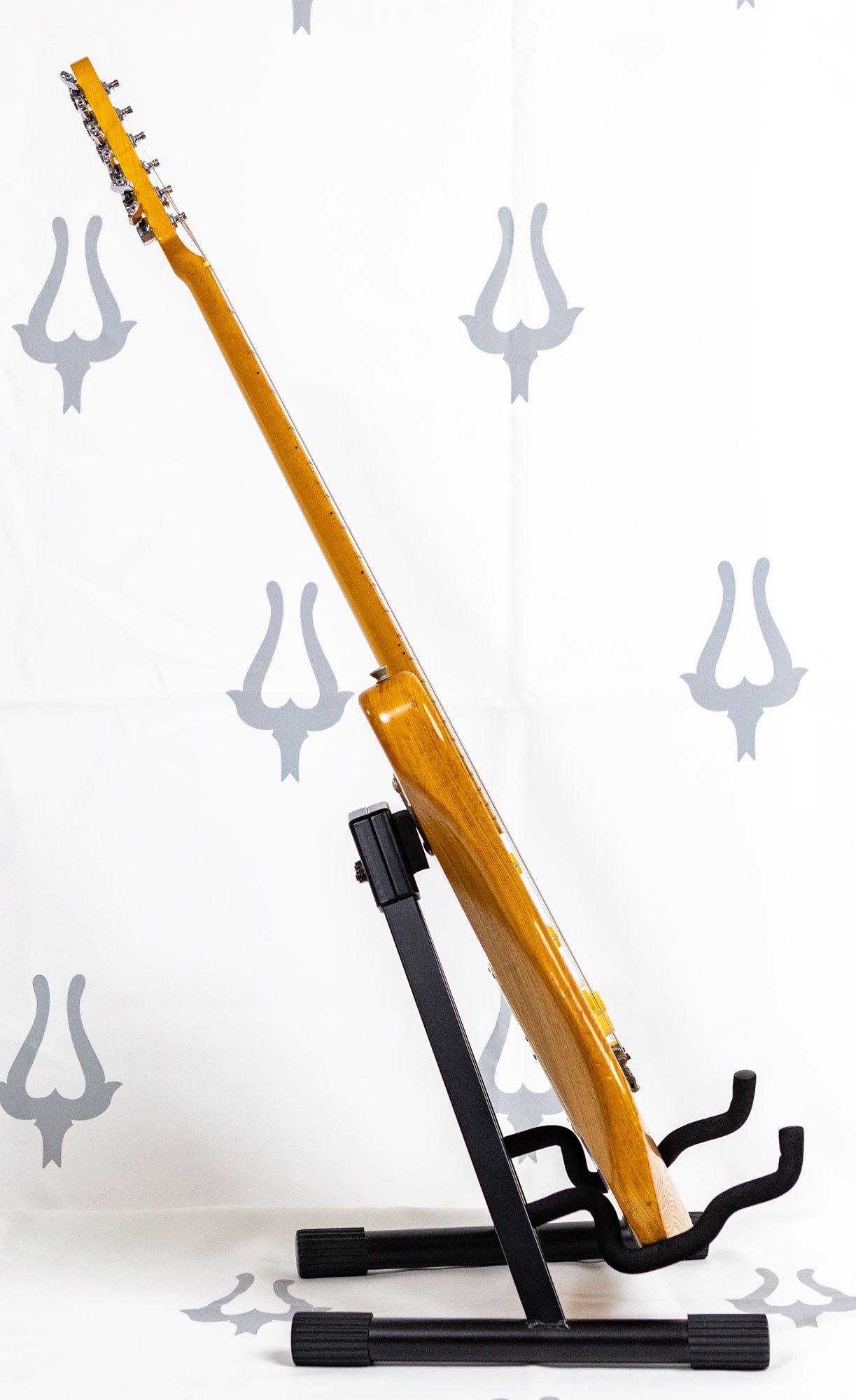




Yamaki 600N (Natural)
Serial #130019

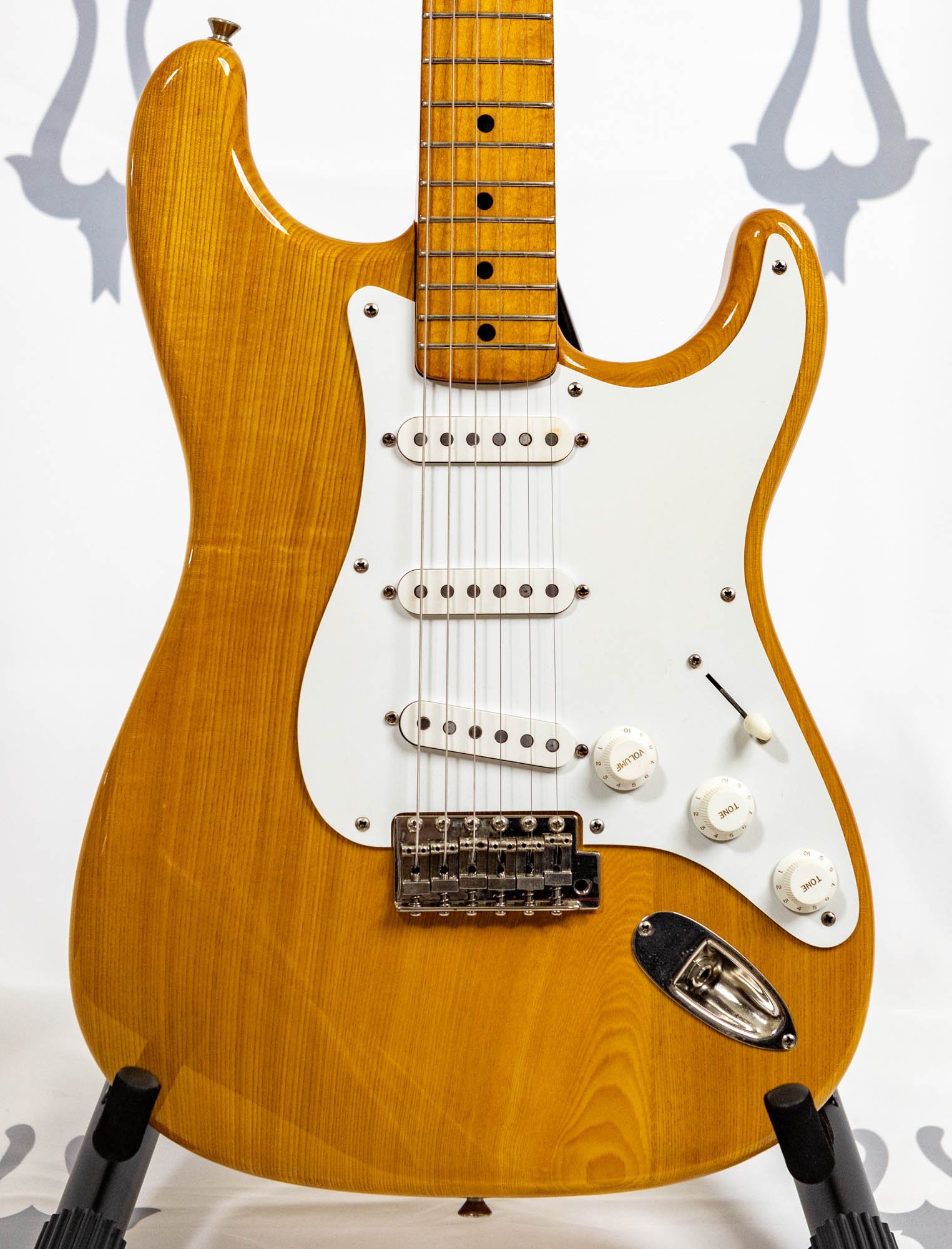















Yamaki 800N (Natural)

















